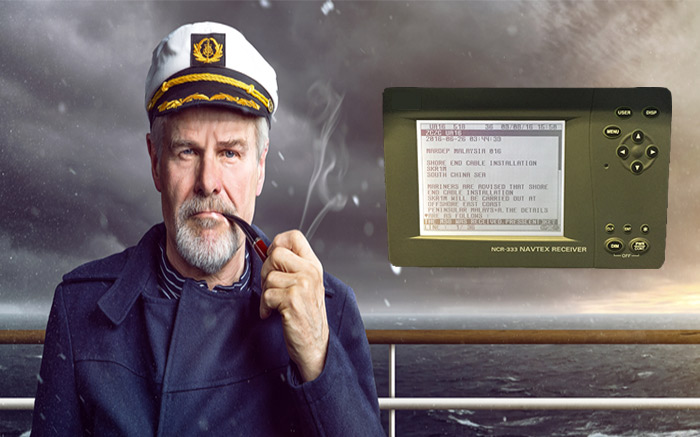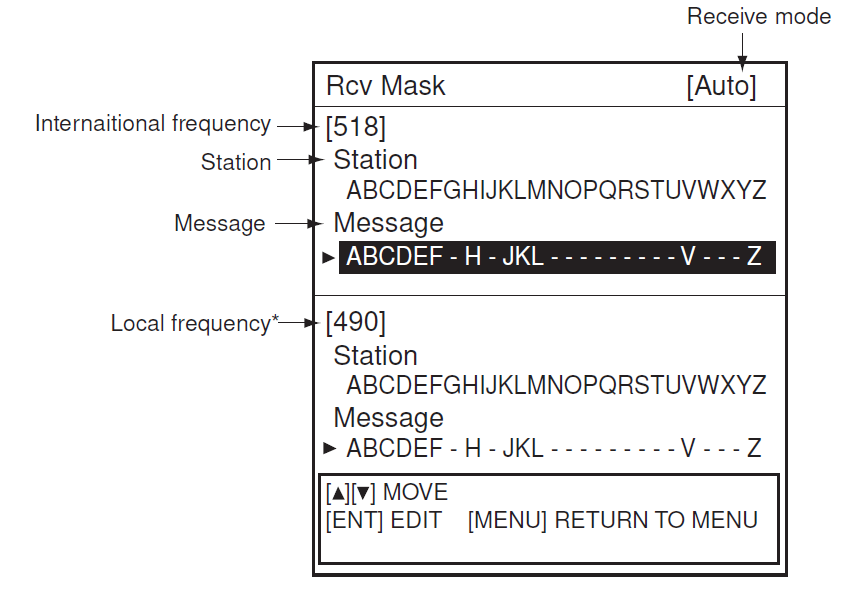DLP-MT-LPCOM2-NAVTEX receiver – Local frequency
NAVTEX (Navigational Telex) is a world wide coastal telex broadcasting system.
Do you struggle to sort out NAVTEX warnings ? If yes, you are not alone.

Think about the following question:
-How could you choose local frequency?

Navtex broadcasts are primarily made on the Medium frequencies of 518 kHz and 490 kHz. The international navtex frequency is 518 kHz, and these broadcasts should always be in English. National transmission of navtex uses 490 kHz specifically for broadcasts in local languages.
Broadcast frequencies and content
There are two NAVTEX frequencies. All transmissions on NAVTEX 518 kHz the international channel should be in English. Wherever you are at sea in the world, a set receiving NAVTEX 518 kHz should provide you with relevant weather forecasts, severe weather warnings and navigation warnings such as obstructions or buoys off station. Depending on your location other information options may be available such as ice warnings for high latitude sailing.
The 490 kHz national NAVTEX service may be transmitted in the local language. In the UK full use is made of this second frequency including useful information for smaller craft, such as the inshore waters forecast and actual weather observations from weather stations around the coast.
Dual frequency NAVTEX sets are available to allow yachtsmen to take advantage of both services, and some such sets will monitor both frequencies at the same time.
Once you have programmed your receiver it will automatically receive and (print or) store information until you want to access it. A NAVTEX receiver can be set up to ensure that it collects the information you are interested in and rejects that which you do not want, such as information from transmitters further afield or subject matter not applicable to small craft. It may not be possible to switch some transmissions off such as transmissions classed as warnings. It is good practice to tune your NAVTEX to receive broadcasts for the area you are in and the area you are sailing to.
Follow the steps choosing the Local Frequency
You can choose 490 kHz or 4209.5 kHz as the local frequency on Auto or Manual mode.
1. Press the MENU/ESC key to show the main menu.
2. Press ▲ or ▼ to choose NAVTEX, and then press the ENT key or ►.
3. Press ▲ or ▼ to choose Local Channel, and then press the ENT key or ► to show the local channel options.
490kHz
4209.5kHz
Local channel options
4. Press ▲ or ▼ to choose the frequency 490 kHz or 4209.5 kHz, and then press the ENT key.
5. Press the MENU/ESC key several times to close the menu.
Watch this video carefully
Read carefully the following slides
Please answer the multiple choice questions in this quiz, if you can't answer some of the questions, go again to activity and try again.
Resource information